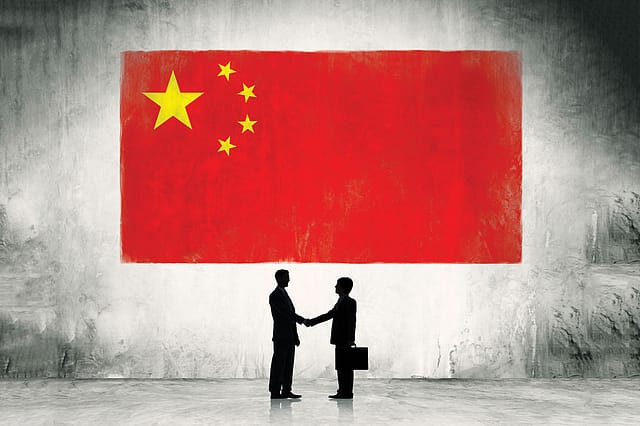China’s Charm Offensive in India’s Backyard: Strategic Inroads and India’s Dilemma

For decades, India saw South Asia as its natural sphere of influence. When Maldivian President Mohamed Muizzu insisted that India withdraw from Malé, it marked a new phase in China’s strategy for South Asia. From the Himalayan republics to the Indian Ocean island nations, New Delhi sought to be the region's stabilizing and growing anchor. However, this concept is currently being scrutinized. China's steady and systematic achievements in South Asia, dubbed a "charm offensive," have moved beyond economics to include diplomacy, defense, and soft power. For India, this is more than just a question of influence; it is a test of whether it can maintain dominance in its immediate neighborhood in the face of Beijing's expanding power.
Beijing's Expanded Regional Playbook
China has become Bangladesh's largest commercial partner and defense supplier, accounting for more than two-thirds of its military imports. Despite India's critical $4 billion in emergency aid during the 2022 crisis, Beijing's debt diplomacy and the Hambantota Port lease continue to represent long-term Chinese influence in Sri Lanka.
In Nepal, Belt and Road projects have provided an alternative to Indian-led connectivity, particularly in hydropower. Bhutan, India's longtime ally, has just agreed to establish formal diplomatic ties with Beijing, raising fears over sensitive border regions such as Doklam. Further, in Maldives, under President Mohamed Muizzu, Malé has shifted its stance toward China, negotiating infrastructure projects while pressuring India to reduce its security presence. Beijing's outreach combines economic incentives with political support, challenging New Delhi's long-standing dominance in the Indian Ocean.
The Lean Season
31 Oct 2025 - Vol 04 | Issue 45
Indians join the global craze for weight loss medications
The Instruments of Charm
China's policy in South Asia is deliberate and complex. Economic leverage includes concessional loans, infrastructure projects, and trade agreements under the Belt and Road Initiative. Defense diplomacy entails arms sales, training, and exercises that gradually erode India's status as a key security partner. Political participation includes high-level visits, party-to-party exchanges, and scholarships, which influence elite perceptions. Crisis intervention entails taking advantage of financial or political crises to increase reliance. This establishes long-term ties that go beyond particular regimes and integrates China into the region's strategic architecture.
India's Countermovements and Constraints
New Delhi has not been complacent in the face of Beijing’s advancements. It has increased neighbourhood’s participation through a variety of economic, security and regional efforts aimed at reinforcing its traditional position as South Asia’s cornerstone. On the economic front, India has provided essential support, including a $4 billion lifeline to Sri Lanka during its 2022 financial crises, and long-term investments in Bhutan’s hydropower sector, which provides clean energy to both nations. In terms of security cooperation, India continues to undertake joint military exercises, give officer training and build capacity with its small neighbour, ensuring that it remains their preferred defense partner despite China’s rising arms supply.
Regionally, New Delhi has attempted to integrate its cooperation in multilateral forums—BIMSTEC has been relaunched as a Bay of Bengal platform. The Colombo security conclave is focused on Indian Ocean maritime coordination, and Indo-Pacific networks connect South Asia to larger strategic groups. Nonetheless, these initiatives encounter substantial hurdles. Indian projects frequently move slowly, hampered by bureaucratic delays and implementation constraints. India does not always have the financial resources or pace to match Beijing’s billion-dollar infrastructure loans. Domestic politics in South Asian capitals complicate matters further, with politicians frequently exploiting anti-Indian sentiment to gain support, making New Delhi's presence appear intrusive rather than constructive.
Strategic Risks for India
China's expanding footprint is leaving India hemmed in by both land and water. The security encirclement, including potential Chinese access to South Asian ports, limits India's maritime freedom. Political leverage, as ruling elites use Beijing to counterweight New Delhi. Economic dependence, with neighbors growing increasingly reliant on Chinese financing and markets.
India is currently at a critical moment. One approach is to compete directly with China in all sectors, including infrastructure, defense, and influence efforts. Another alternative is to accept some degree of coexistence, relying on natural advantages over location, cultural affinity, and long-standing interpersonal connections. A more sustainable third-way approach, however, is to create regional frameworks that promote transparent financing, renewable energy partnerships, and digital communications, while leveraging collaborations like Quad and larger Indo-Pacific networks.
India’s true value has always been the trust it has in the region, but that goodwill must be backed up with concrete results. In a situation where Beijing is offering billion-dollar loans and quickly expanding infrastructure, trust and symbolism will no longer suffice.
Beyond Charm
China's charm offensive in South Asia is less about goodwill and more about shifting alliances. For Beijing, the region provides both strategic depth and a critical Belt and Road link. For New Delhi, the stakes are existential: losing regional dominance would jeopardize its status as a major Asian power.
The next decade will decide whether India can reinvent its diplomacy to be more timely, generous, and strategic—or whether China’s attraction will cement its long-term supremacy. The primary question is no more whether Beijing enchants South Asia, but whether New Delhi can remain its anchor in an era of contested power. China may entice South Asia with billion-dollar checks, but India must demonstrate that it can still set the pace in its own backyard.
